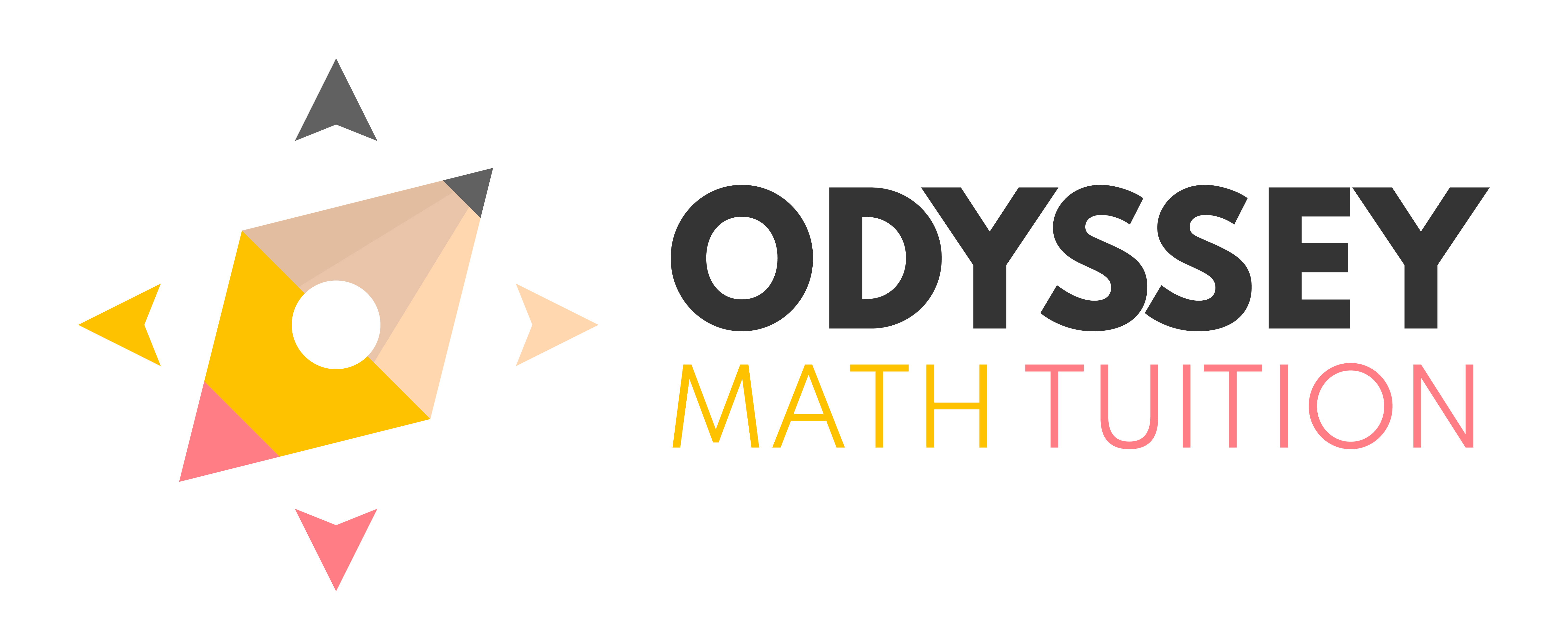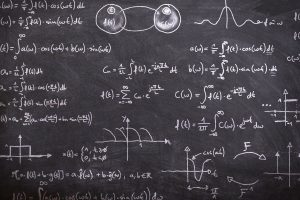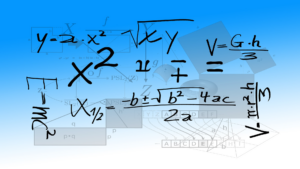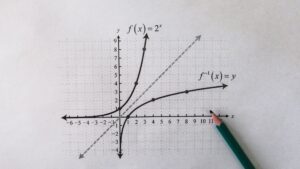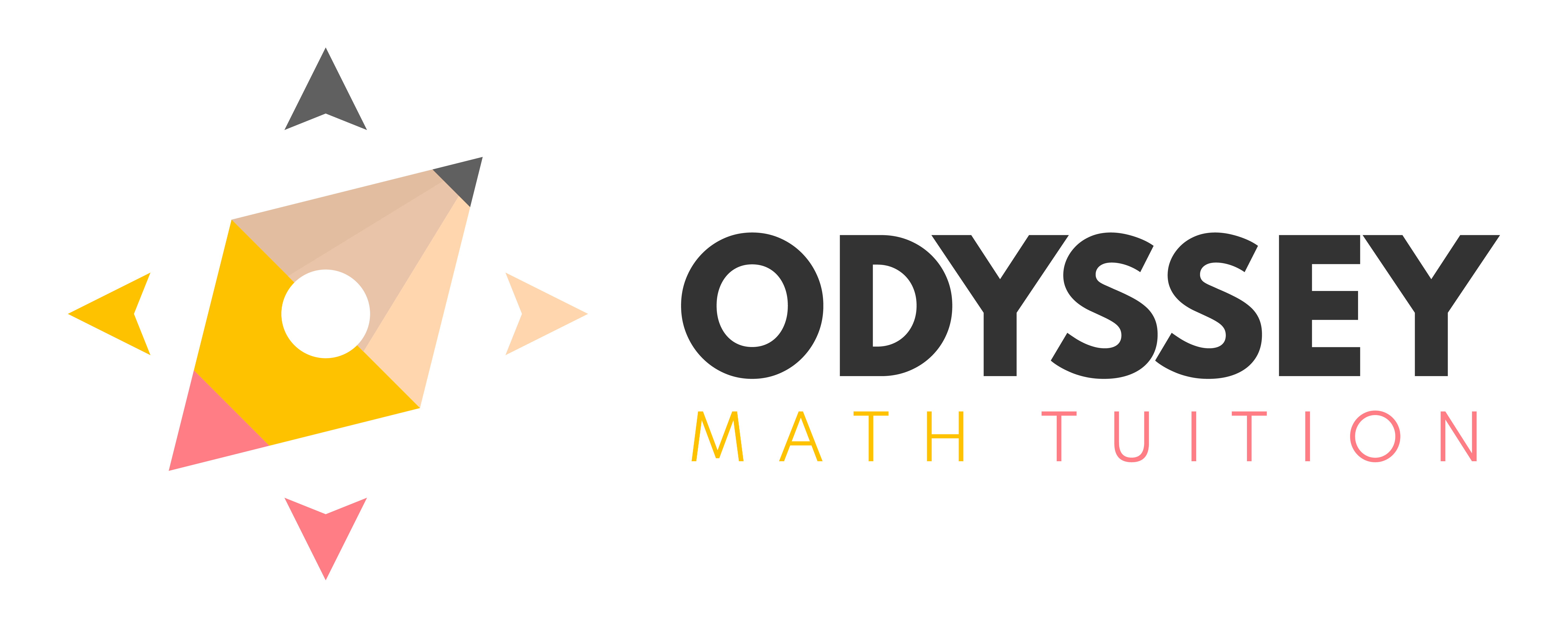A Level H2 Math Tuition
(Improve 2 Grades Or More)
(Improve 2 Grades Or More)
Worried about not doing well in H2 Math?
H2 Math Tuition, is it needed? In Odyssey Math, in addition to focusing on students’ mathematical concepts and the difficulties they faced understanding mathematics, Mr Tan will always try his best to motivate his students and at the same time identify weaknesses and gaps in his students’ mathematical understanding. The key to teaching is not only to just go through mathematics during the 2 hours class but also to be genuine in helping students during and even after lessons. Mr Tan seeks to work with his students and provide them the necessary support as much as possible. For H2 Math, the key to doing well is to apply the right concepts and do enough practice questions to hone their math foundation.
H2 Math Tuition: Boost Your Grades and Ace Your Exams!
If you’re a junior college student in Singapore, you know that H2 Math is one of the most challenging subjects you’ll encounter. With its complex formulas and abstract concepts, it can be difficult to grasp, especially if you’re not a natural at mathematics. That’s why many students turn to H2 Math tuition to get the extra help they need to excel in this subject.

H2 Math tuition can be an excellent way to improve your grades, deepen your understanding of the subject, and develop better study habits. In this article, we’ll explore what H2 Math tuition is, what you can expect from these classes, and how to choose the right tuition programme for your needs. We’ll also discuss the benefits of online learning and the specialised programmes available for students who want to take their math skills to the next level.
Understanding H2 Math

If you are studying H2 Math, you are on the right track to pursuing a career in fields such as engineering, finance, and science. H2 Math is a challenging subject that requires a strong foundation in key mathematical concepts. In this section, we will explore the key concepts in H2 Math and the importance of a strong foundation.
Key Concepts in H2 Math
H2 Math covers a wide range of topics, including calculus, complex numbers, vectors, and statistics. It is important to have a deep understanding of these concepts to excel in the subject. Calculus, for example, is a fundamental concept in mathematics that deals with the study of continuous change. It is used in fields such as physics, engineering, and economics. Complex numbers, on the other hand, are used in many areas of mathematics, including algebra, geometry, and calculus. Vectors are used to represent physical quantities that have both magnitude and direction, such as force and velocity. Statistics is the study of data and is used in fields such as finance, marketing, and science.
The Importance of a Strong Foundation
To excel in H2 Math, it is essential to have a strong foundation in key mathematical concepts. This foundation is built in the lower secondary and upper secondary levels, where you will learn the basics of algebra, geometry, and trigonometry. A strong foundation is important because it allows you to understand and apply more complex concepts in H2 Math. Without a strong foundation, you may struggle to keep up with the pace of the subject and may find it difficult to grasp more complex concepts.
In conclusion, H2 Math is a challenging subject that requires a strong foundation in key mathematical concepts. It covers a wide range of topics, including calculus, complex numbers, vectors, and statistics. By having a deep understanding of these concepts and building a strong foundation, you will be well-equipped to excel in the subject and pursue a career in fields such as engineering, finance, and science.
Curriculum Overview
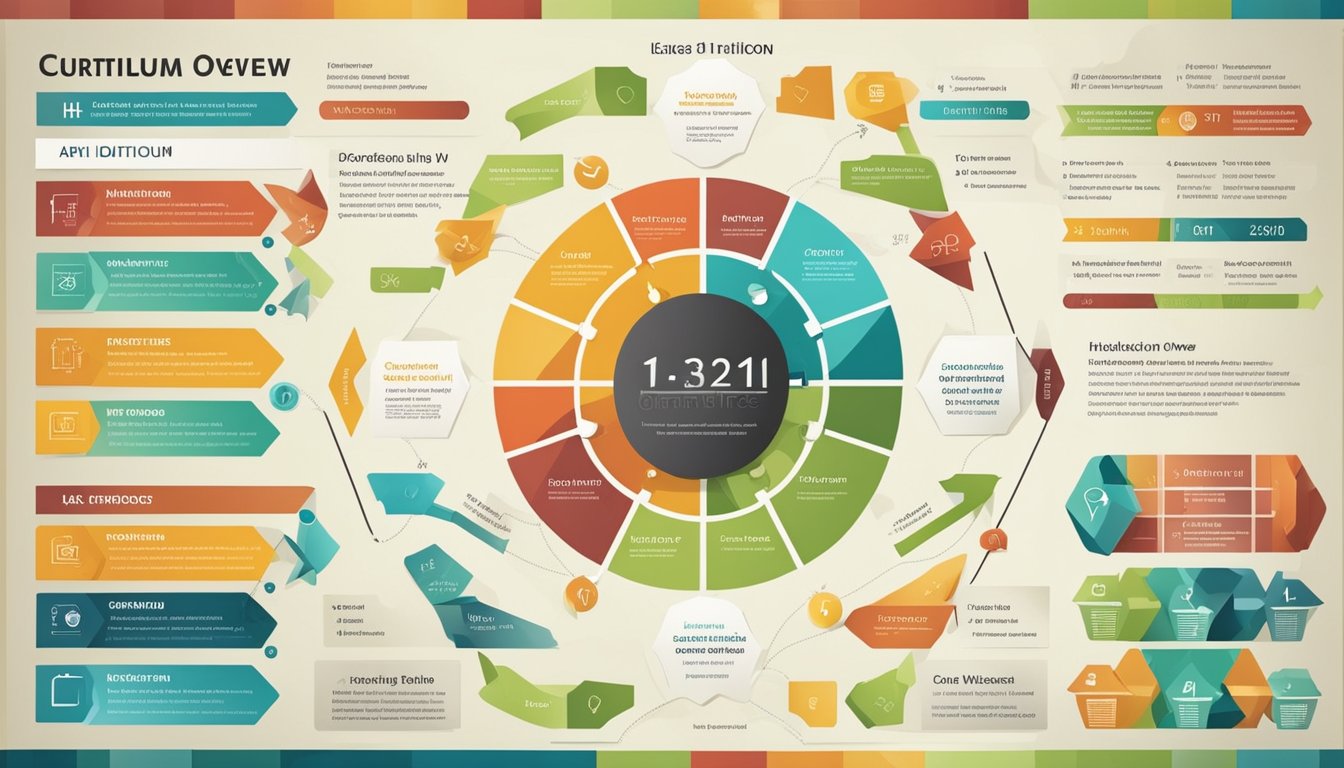
If you’re considering taking H2 Math, it’s important to understand the curriculum and how it fits into the Singapore Math Education System. In this section, we’ll give you an overview of the H2 Math curriculum, including the A Level Math Syllabus and the Singapore Math Education System.
A Level Math Syllabus
The A Level Math Syllabus is designed to challenge students and prepare them for university-level mathematics. It covers a wide range of topics, including calculus, algebra, and geometry. The syllabus is divided into two parts: the H1 Math syllabus and the H2 Math syllabus.
The H1 Math syllabus is designed to give students a solid foundation in mathematics and prepare them for university-level courses that require a basic understanding of math. The H2 Math syllabus, on the other hand, is designed for students who want to pursue a degree in mathematics, science, engineering, or related fields.
The H2 Math syllabus covers a wide range of topics, including calculus, algebra, and geometry. It is designed to challenge students and prepare them for university-level math courses. The syllabus is divided into six modules, each of which covers a specific topic in depth.
Singapore Math Education System
The Singapore Math Education System is well-known for its focus on problem-solving and critical thinking skills. It is designed to help students develop a deep understanding of math concepts and apply them in real-world situations.
The system is based on the belief that every student can learn math, regardless of their background or abilities. It is designed to be inclusive and accessible to all students, regardless of their learning style or pace.
Overall, the H2 Math curriculum is a challenging and rewarding program that prepares students for university-level math courses. By understanding the A Level Math Syllabus and the Singapore Math Education System, you’ll be better equipped to succeed in your H2 Math studies.
Tuition Class Structure

If you’re looking for H2 Math tuition, you’ll want to find a tuition centre that can meet your learning needs. One of the most important factors to consider is the class structure. A good tuition class structure can make all the difference in how well you understand and retain the material.
Small Class Advantages
Small class sizes are one of the biggest advantages of H2 Math tuition. With fewer students in the class, you’ll have more opportunities to ask questions and get help from the tutor. This can be especially important if you’re struggling with certain concepts or need extra help with homework.
In a small class, the tutor can also spend more time with each student, providing individualised attention and feedback. This can help you identify areas where you need to improve and develop a plan to address those weaknesses.
Interactive Learning Environment
Another key advantage of H2 Math tuition is the interactive learning environment. In a good tuition class, you’ll have the opportunity to engage with the material and participate in discussions and activities. This can help you understand the material more deeply and retain it better.
Interactive learning can take many forms, from group discussions to hands-on activities to online simulations. The goal is to keep you engaged and interested in the material, so you’re more likely to remember it and apply it in the future.
Tuition centres that offer small classes and an interactive learning environment can be a great choice for H2 Math students. Look for a centre that prioritises your learning needs and can provide the support and guidance you need to succeed.
Math Tutoring Techniques
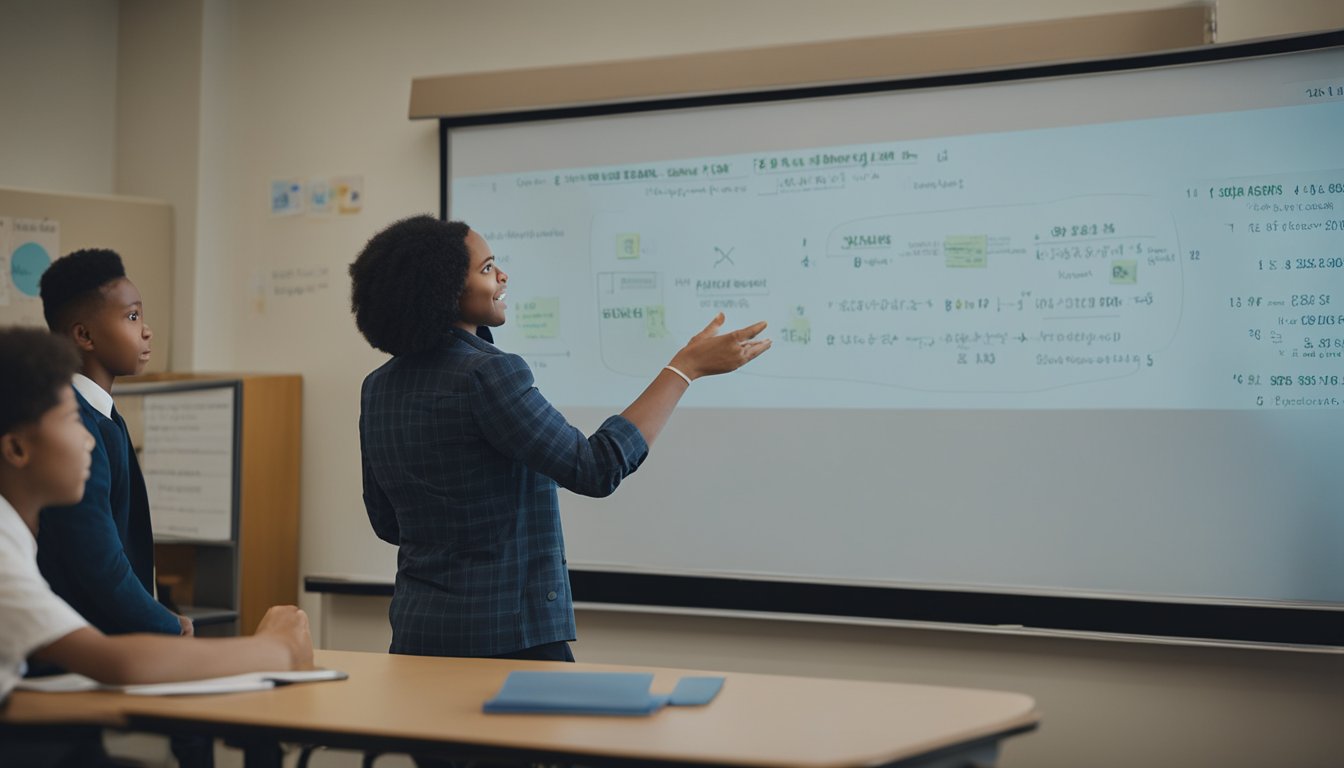
If you’re looking for an H2 math tutor, you want to be sure that they have the teaching experience and expertise to help you succeed. But what sets the best math tutors apart is their ability to use personalised teaching methods that cater to your specific learning style. Here are some of the most effective techniques that top math tutors use to help their students excel.
Personalised Teaching Methods
A great H2 math tutor knows that every student is unique, with their own strengths and weaknesses. That’s why they’ll take the time to get to know you and your learning style, so they can tailor their teaching methods to suit your needs. This might involve using visual aids, hands-on activities, or real-world examples to help you grasp difficult concepts. By catering to your individual learning style, your tutor can help you build confidence and achieve your goals.
Encouraging Problem-Solving Skills
Math isn’t just about memorising formulas and equations. To truly excel in H2 math, you need to develop strong problem-solving skills that allow you to tackle complex problems with ease. The best math tutors know this, and will focus on helping you develop your critical thinking and analytical skills. By encouraging you to think outside the box and approach problems from different angles, your tutor can help you become a more confident and capable math student.
Overall, the key to success in H2 math is finding a math tutor who can help you develop your problem-solving skills and cater to your individual learning style. With the right techniques and teaching methods, you can master even the most challenging maths concepts and achieve your academic goals.
Advancement Through Practice

Are you struggling to keep up with your H2 Math lessons? Do you feel like you’re not making any progress? One of the most effective ways to improve your H2 Math skills is through consistent practice. In this section, we’ll explore how practice can help you advance in your H2 Math tuition.
Homework and Worked Examples
Homework is an essential part of H2 Math tuition. It allows you to apply what you’ve learned in class and identify areas where you need more practice. Your tutor will provide you with practice questions and worked examples to help you understand the concepts better. By doing your homework regularly, you’ll be able to reinforce what you’ve learned in class and improve your problem-solving skills.
Worked examples are particularly useful because they show you step-by-step how to solve a particular problem. They help you understand the thought process behind solving a problem and give you a framework to approach similar problems. Make sure you pay close attention to the worked examples and try to solve the problems on your own before checking the answers.
Regular Testing and Feedback
Regular testing is another critical component of H2 Math tuition. It allows you to assess your understanding of the concepts and identify areas where you need more practice. Your tutor will provide you with practice tests that simulate the actual exam. By taking these tests regularly, you’ll be able to identify your strengths and weaknesses and focus your practice accordingly.
Feedback is also essential to your progress. Your tutor will provide you with feedback on your homework and tests, helping you identify areas where you need to improve. Make sure you pay close attention to the feedback and try to implement it in your practice. By doing so, you’ll be able to make steady progress and improve your H2 Math skills.
In conclusion, practice is key to advancing in your H2 Math tuition. By doing your homework regularly, paying attention to worked examples, taking regular tests, and implementing feedback, you’ll be able to improve your problem-solving skills and make steady progress.
Online Learning Options

If you prefer the flexibility of online learning, then H2 math tuition has got you covered. With online classes, you can learn from anywhere in the world, and at any time that suits you. Here are some of the benefits of online learning:
Virtual Classroom Benefits
Online classes are held in a virtual classroom, which is similar to a physical classroom. The only difference is that you can attend the class from the comfort of your own home. You can interact with your teacher and classmates in real-time, just like you would in a physical classroom. This means that you can ask questions and get answers right away. You can also participate in group discussions and work on group projects.
Supplementary Online Resources
In addition to live online classes, many H2 math tuition providers offer supplementary online resources such as video lessons and recorded video solutions. These resources can be accessed at any time, which means that you can learn at your own pace. Video lessons are especially helpful because you can pause, rewind and replay them as many times as you need to. Recorded video solutions are also useful because you can see how problems are solved step-by-step.
Overall, online learning is a great option for those who prefer the flexibility of learning from home. With virtual classrooms and supplementary online resources, you can get the same quality of education as you would in a physical classroom. So why not give it a try?
Math Topics Explored
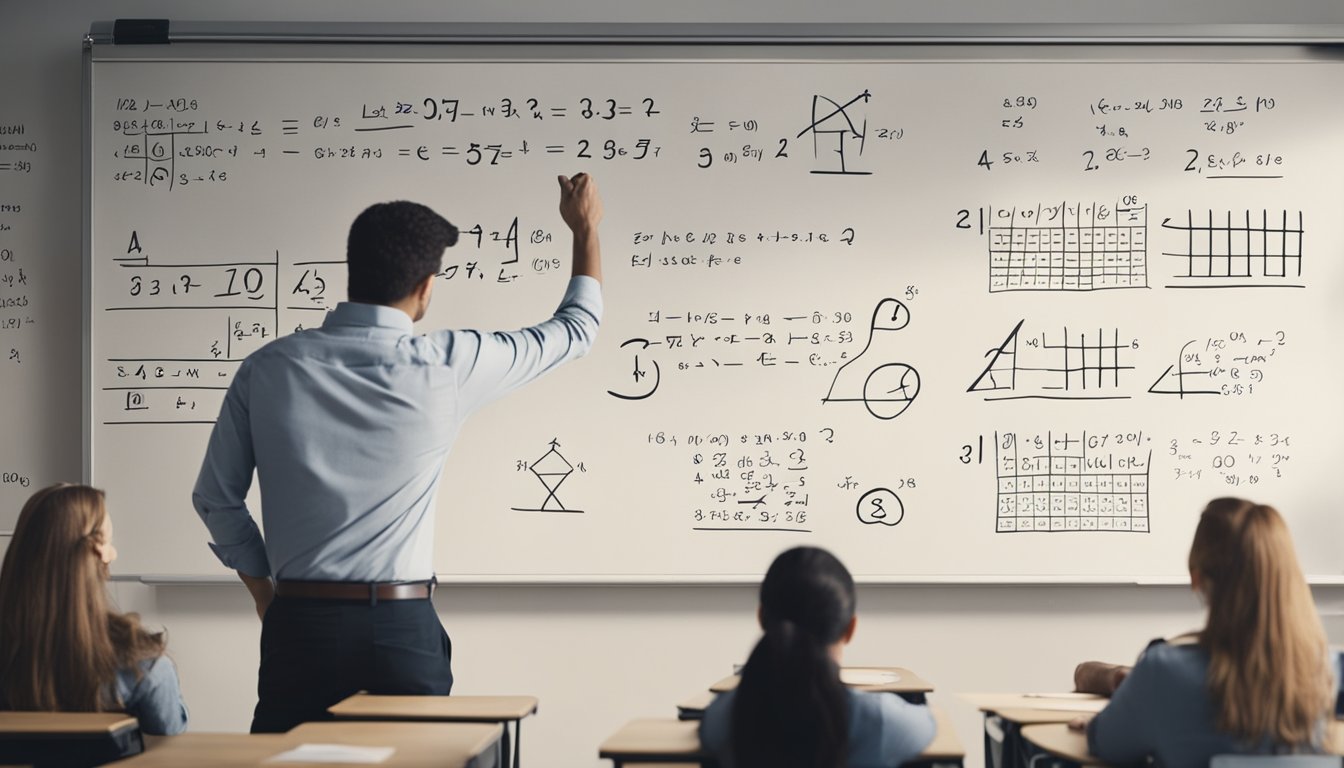
If you’re planning to take H2 Math, you’ll be exploring a variety of topics that will help you develop a solid understanding of mathematics. Here are some of the topics you can expect to cover:
Calculus and Its Applications
Calculus is a fundamental part of H2 Math, and you’ll be exploring both differentiation and integration. Differentiation is the process of finding the rate of change of a function, while integration is the process of finding the area under a curve. You’ll also be exploring the applications of calculus in fields such as physics, engineering, and economics.
Statistics and Probability
In H2 Math, you’ll be exploring statistics and probability, which are crucial for understanding how to analyze data. You’ll be learning about topics such as probability distributions, hypothesis testing, and regression analysis. These topics will help you develop a strong foundation in statistical analysis and prepare you for future studies in fields such as data science and finance.
Algebra and Functions
Algebra and functions are also fundamental parts of H2 Math. You’ll be exploring topics such as quadratic equations, logarithmic functions, and trigonometry. These topics will help you develop a deep understanding of mathematical concepts and prepare you for future studies in fields such as physics, engineering, and computer science.
Overall, H2 Math is an exciting subject that will challenge you to think critically and develop a strong foundation in mathematics. Whether you’re interested in pursuing a career in science, engineering, or finance, H2 Math will provide you with the skills and knowledge you need to succeed.
Exam Preparation Strategies

Preparing for your H2 Math exams can be daunting, but with the right strategies, you can ace your exams with confidence. Here are some tips to help you master exam question types and manage your time effectively.
Mastering Exam Question Types
To excel in H2 Math exams, you need to familiarise yourself with the various question types that are likely to appear. These include algebraic manipulation, calculus, complex numbers, probability, and statistics.
One way to master these question types is to practice regularly. Work through past papers and sample questions to build your confidence and improve your problem-solving skills. Additionally, consider seeking help from a qualified H2 Math tutor who can guide you through challenging concepts and provide you with targeted feedback.
Time Management and Tricks
Effective time management is key to success in H2 Math exams. Create a realistic timetable that allows you to cover all topics and leaves enough time for revision. Start early to avoid cramming and give yourself enough time to review and consolidate your knowledge.
During the exam, use time management tricks to maximise your efficiency. For example, start with the questions that you find easiest and leave the more challenging ones for later. This will help you build your confidence and ensure that you have enough time to tackle the more difficult questions.
Another trick is to read the question carefully and underline key information. This will help you avoid making careless mistakes and ensure that you answer the question correctly.
By mastering exam question types and using effective time management strategies, you can boost your confidence and achieve success in your H2 Math exams.
Additional Support for JC Students
Are you struggling with H2 Math? Do you find yourself stuck on challenging questions? Don’t worry, there are many options available to you for additional support.

Extra Help for Challenging Questions
If you are having trouble with specific topics or questions, it can be helpful to seek extra help. Many H2 Math tuition centres offer additional resources such as question banks, summary booklets, and online learning portals. For example, Tim Gan Math offers a compilation of over 1000 questions with handwritten and video solutions, as well as a summary booklet that covers everything you need to know in just 30 pages. The SmileTutor also provides a list of the 10 best options for JC H2 Math tuition in Singapore, which includes centres that offer additional resources to help you tackle challenging questions.
Approachable Tutors for Personal Guidance
Sometimes, all you need is a little extra guidance from an approachable tutor. Many H2 Math tuition centres offer small class sizes, which means you can receive more personalised attention from your tutor. For example, Math Academy holds weekly H2 Maths Tuition classes for JC 1 and JC 2 with a maximum of 9 students per class. The JC H2 Maths Tutor also offers expert tutors who provide comprehensive guidance for JC students, covering key topics and exam strategies.
With these additional resources and approachable tutors, you can get the extra help you need to excel in your H2 Math studies.
Choosing the Right Tuition

If you’re struggling with H2 Maths, getting the right tuition can be a game-changer. But with so many options available, how do you choose the right one for you? Here are some things to consider:
Trial Lessons
Many tuition centres and math tutors offer trial lessons, which give you the chance to try out a lesson before committing to a full course. This is a great opportunity to see if the teaching style and pace of the lesson suit you. During the trial lesson, you can also ask the tutor any questions you might have about the course and get a better idea of what to expect.
Class Sizes
Another factor to consider when choosing the right H2 Maths tuition is class sizes. Different tuition centres and math tutors offer different class sizes, ranging from one-to-one tutoring to larger group classes. If you prefer a more personalised approach, then one-to-one tutoring might be the best option for you. On the other hand, if you enjoy the added motivation and friendly competition of group classes, then you might want to opt for a larger class.
When it comes to choosing the right tuition for H2 Maths, it’s essential to take your time and consider your options. By trying out trial lessons and considering class sizes, you can find the right tuition that suits your learning style and needs. Whether you opt for a tuition centre or math tutor, the right tuition can help you boost your grades and achieve your academic goals.
Beyond the Classroom

When it comes to H2 Math tuition, it’s not just about getting good grades. It’s about building confidence and interest in the subject, preparing for university and beyond, and developing patience and perseverance. Here are some ways that H2 Math tuition can help you go beyond the classroom and achieve your goals.
Building Confidence and Interest
One of the main benefits of H2 Math tuition is that it can help you build confidence in your abilities. With the right tutor, you can get the individual attention you need to overcome any challenges you may be facing and develop a deeper understanding of the subject. As your confidence grows, you may find that your interest in the subject increases as well, making it easier to stay motivated and engaged.
Preparing for University and Beyond
H2 Math is a challenging subject, and it’s one that you’ll need to master if you want to succeed in university and beyond. By taking H2 Math tuition, you can get a head start on the material and develop the skills you’ll need to excel in higher education. You’ll also have the opportunity to work with experienced tutors who can offer guidance and support as you prepare for your future.
Developing Patience and Perseverance
H2 Math can be frustrating at times, especially when you’re struggling to understand a concept or solve a problem. However, with the right mindset and support, you can develop the patience and perseverance you need to overcome these challenges. By working with a tutor who understands your strengths and weaknesses, you can learn to approach problems with a clear and focused mind, and develop the resilience you need to succeed in any situation.
In conclusion, H2 Math tuition is not just about getting good grades. It’s about building confidence and interest in the subject, preparing for university and beyond, and developing patience and perseverance. With the right tutor and the right mindset, you can go beyond the classroom and achieve your goals in H2 Math and beyond.
Specialised Programmes

If you are looking for specialised H2 Math tuition programmes, you have come to the right place. Here at Math Academy, we offer IP Math Enrichment and IB Math Preparation programmes that are tailored to meet your needs.
IP Math Enrichment
Our IP Math Enrichment programme is designed for students who are enrolled in the Integrated Programme (IP). This programme aims to provide students with a strong foundation in Mathematics, equipping them with the necessary skills and knowledge to excel in their IP Math curriculum.
Our experienced tutors will guide you through the various topics covered in the IP Math syllabus, including Algebra, Calculus, and Statistics. We will also provide you with additional resources and practice questions to help you master the subject.
IB Math Preparation
If you are planning to pursue the International Baccalaureate (IB) programme, our IB Math Preparation programme is perfect for you. This programme is designed to help you prepare for the challenging IB Math curriculum.
Our tutors will guide you through the various topics covered in the IB Math syllabus, including Functions, Trigonometry, and Calculus. We will also provide you with practice questions and past papers to help you prepare for your IB Math exams.
At Math Academy, we are committed to helping you achieve your academic goals. Contact us today to find out more about our specialised H2 Math tuition programmes.
Advanced Topics for Keen Learners

If you are a keen learner who wants to challenge yourself beyond the H2 Math curriculum, there are several advanced topics that you can explore. In this section, we will discuss two areas of study: Further Mathematics Insights and Exploring Pure Mathematics.
Further Mathematics Insights
Further Mathematics is an extension of H2 Mathematics that covers topics such as complex numbers, vectors, and permutations. It is a challenging subject that requires a strong foundation in H2 Mathematics. However, if you are up for the challenge, studying Further Mathematics can give you a deeper understanding of the subject and open up new opportunities for you in the future.
One of the key insights that you can gain from studying Further Mathematics is a better understanding of complex numbers. Complex numbers are an extension of the real numbers that include an imaginary unit, denoted by i. They are used to represent quantities that cannot be expressed as real numbers, such as the square root of a negative number. If you are interested in exploring the properties of complex numbers, you can start by learning about their algebraic and geometric representations.
Exploring Pure Mathematics
Pure Mathematics is a branch of mathematics that deals with abstract concepts such as numbers, sets, and functions. It is a fascinating area of study that can lead to new discoveries and insights. If you are interested in exploring Pure Mathematics, there are several topics that you can focus on.
One of the key topics in Pure Mathematics is correlation. Correlation is a statistical measure that describes the relationship between two variables. It is commonly used in fields such as finance, economics, and psychology to analyze data and make predictions. If you are interested in learning more about correlation, you can start by studying its properties and applications.
Another key topic in Pure Mathematics is vectors. Vectors are quantities that have both magnitude and direction. They are used to represent physical quantities such as velocity, acceleration, and force. If you are interested in exploring the properties of vectors, you can start by learning about their algebraic and geometric representations.
In conclusion, if you are a keen learner who wants to challenge yourself beyond the H2 Math curriculum, there are several advanced topics that you can explore. By studying Further Mathematics and Pure Mathematics, you can gain a deeper understanding of the subject and open up new opportunities for yourself in the future.
Frequently Asked Questions

How can I ace my JC Math with the top tuition services?
If you’re looking to excel in JC Math, enrolling in a top tuition service is a great way to get started. Look for a tuition service that offers experienced tutors, comprehensive study materials, and a personalised approach to learning. With the right tuition service, you’ll be able to master even the most challenging topics in H2 Math.
What’s the secret to scoring an ‘A’ grade in H2 Math?
Scoring an ‘A’ grade in H2 Math requires practice, dedication, and a deep understanding of the subject matter. With the right tuition service, you can get all the support you need to achieve your academic goals. Make sure to choose a tuition service that offers personalised attention, engaging lessons, and plenty of opportunities for practice and feedback.
Where can I find the most engaging 1-to-1 Math tuition?
If you’re looking for engaging 1-to-1 Math tuition, consider working with a private tutor or enrolling in a tuition service that offers personalised attention. Look for a tutor or tuition service that has a track record of success and offers a range of resources and materials to support your learning.
Which online platforms offer the best experience for Maths tuition?
There are many online platforms that offer Maths tuition, but not all of them are created equal. Look for a platform that offers engaging, interactive lessons, experienced tutors, and a range of resources and materials to support your learning. Some of the top online platforms for Maths tuition include Khan Academy, Brilliant, and Coursera.
Can you believe the amazing results from Odyssey Math tuition?
Odyssey Math tuition is a popular choice for students who are looking to excel in H2 Math. With experienced tutors, engaging lessons, and a personalised approach to learning, Odyssey Math tuition has helped many students achieve their academic goals. While results may vary, many students have reported significant improvements in their grades and overall understanding of the subject matter.
What are the costs associated with premier H2 Math tuition programmes?
The costs associated with premier H2 Math tuition programmes can vary depending on the service provider and the level of support you require. Generally, you can expect to pay anywhere from £30 to £100 per hour for H2 Math tuition. While this may seem like a significant investment, the benefits of working with a top tuition service can be well worth the cost.
Affordable Rates
Affordable, no hidden charges, no registration and administrative fees.
Free Trial Available
First lesson is a free trial! No obligations to continue!
Premium Resources
Math resources for all the math help you need
Math tuition that provides FREE e-learning
for enrolled students
Why Odyssey Math?
Results Oriented
Why send your child in the first place if it doesn’t solve his or her problem? We assure that if our students follow our guidance , do the assignments given and at the same time ask questions we can assure that they will improve their grades in H2 Mathematics. We are always there for the students when they need it and this is exactly what they need to improve their results. Mr Tan seeks to instill confidence in students, give them encouragement and motivation and at the same time be very genuine towards the development of the students both academically and holistically. Students who put in the hard work, follow his guidance and make use of his resources will be able to improve in mathematics.
Experienced and Qualified Math Tutor
With 11 years of coaching mathematics and having a passion for mathematics, Mr Tan has graduated with a math degree with distinction from NUS and continues to impart knowledge to his students. Throughout his time studying and coaching mathematics, he has gain a strong understanding of the subject. As such, Mr Tan is able to teach H2 Math in a simplified manner and generous in providing tips and tricks to tackle the subject. This will allow students to better understand the subject and give them an edge over the rest.
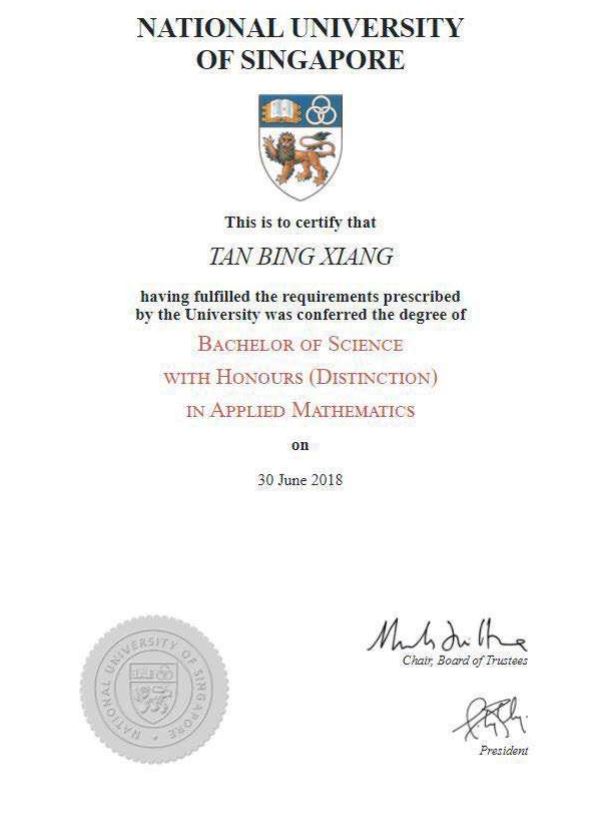
Affordable H2 Math Tuition with maximum value
You can be assured that students will benefit from our H2 Math Tuition at an affordable rate. Our aim is to help the students but at the same time provide the maximum values to students and reducing the cost burden to many parents.
24/7 Support
We stay committed to answering students’ queries even after lesson hours. Mr Tan believes that when it comes to education services, learning does not end after lesson hours.
Small Class Sizes
In Odyssey Math, we aim to provide equal attention to all of us students. As such, we keep the class size small (6 to 8 students).
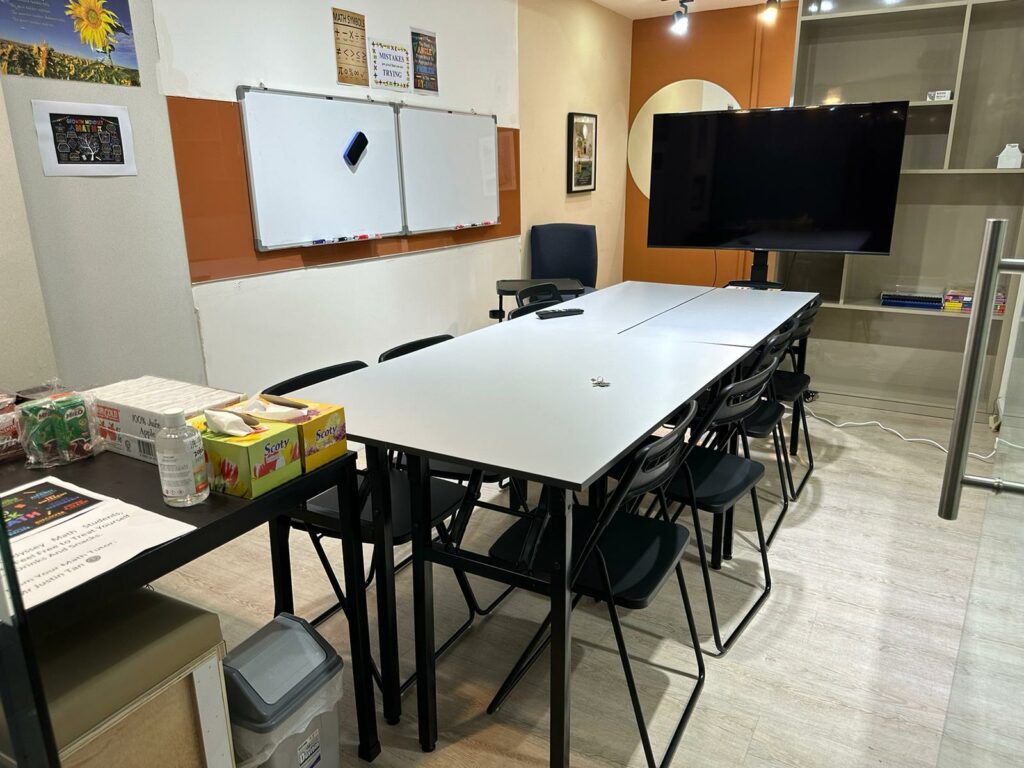
Testimonials of our teaching
Don’t just listen to what we have to say, see below on the testimonials from our students.
Our H2 Math Tuition Structure
Our H2 Math Tuition structure is broken down into 4 phases below. Students will gain conceptual understanding of topics, thereafter practice in class and will be assigned homework to be reviewed in subsequent lessons. Topical tests will be given to test their aptitude in the topics learnt after which we will review with them and resolve misconceptions and weaknesses in concepts.
Introduction of Topics
Practice and Homework
Topical Test
Review
H2 Math Topics Covered
- Concepts of function, domain and range
- Usage of notations
- Inverse functions
- Composite functions
- Conditions for the existence of inverse and composite functions
- Domain restriction to obtain an inverse function
- Relationship between a function and its inverse
- Use of a graphing calculator to graph a given function
- Important characteristics of graphs such as symmetry, intersections with the axes, turning points and asymptotes
- Determining equations of asymptotes, axes of symmetry, and restrictions on the possible values of x and/or y
- Effect of transformations on the graph of y=f(x) and combinations of various transformations
- Parametric equations and their graphs
- Formulating an equation, a system of linear equations or inequalities based on a problem
- Using graphing calculator to solve an equation
- Using a graphing calculator to solve a system of linear equations
- Solving inequalities where the numerator and denominator are either linear or quadratic expressions that are either factorisable or always positive
- Concept of absolute value of x and use of relations
- Using graphical methods to solve inequalities
- Understanding sequence and series for finite and infinite cases
- Sequence as function
- Using the summation notation
- Sum and difference of two series
- Summation of series by the method of differences
- Convergence of a series and the sum to infinity
- Formula for the nth term and the sum of a finite arithmetic series
- Formula for the nth term and the sum of a finite geometric series
- Condition for convergence of an infinite geometric series
- Formula for the sum to infinity of a convergent geometric series
- Vectors in three dimensions
- Addition, subtraction and multiplication of a vector by a scalar and their geometrical interpretations
- Use of notations in vectors
- Position, displacement and direction vectors
- Magnitude of a vector
- Unit vectors
- Distance between two points
- Collinearity
- Use of the ratio theorem in geometrical applications
- Scalar product of vectors
- Vector product of vectors
- Angle between two vectors
- Vector and cartesian equations of lines and planes
- Finding the foot of the perpendicular and distance from a point to a line or to a plane
- Finding the angle between two lines, between a line and a plane, or between two planes
- Relationships between two lines (either coplanar or skew)
- Relationships between a line and a plane
- Relationships between two planes
- Extension of the number system from real numbers to complex numbers
- Complex roots of quadratic equations
- Conjugate of a complex number
- Four operations of complex numbers
- Equality of complex numbers
- Conjugate roots of a polynomial equation with real coefficients
- Representation of complex numbers in the Argand diagram
- Calculation of modulus and argument of a complex number
- Multiplication and division of two complex numbers expressed in polar form
- Graphical integration of various derivative functions
- Relating the graph of y=f'(x) to the graph of y=f(x)
- Implicit differentiation
- Determining the nature of the stationary points
- Locating maximum and minimum points using a graphing calculator
- Finding the approximate value of a derivative at a given point using a graphing calculator
- Finding equations of tangents and normals to curves, including cases where the curve is defined implicitly or parametrically
- local maxima and minima problems
- connected rates of change problems
- Standard series expansion
- Derivation of first few terms of the Maclaurin series by repeated differentiation, repeated implicit differentiation or using standard series
- Know the range of values of x for which a standard series converges
- Understanding the concept of approximation
- Small angle approximations
- Integration of new forms of algebraic and trigonometric expressions
- Integration by a given substitution
- Integration by parts
- Understanding definite integral as a limit of sum
- Definite Integral as the area under a curve
- Evaluating definite integrals
- Find the area of a region bounded by a curve and lines parallel to the coordinate axes, between a curve and a line, or between two curves
- Area below the x-axis
- Finding the area under a curve defined parametrically
- Finding the volume of revolution about the x- or y-axis
- Finding the approximate value of a definite integral using a graphing calculator
- Solving general solutions and particular solutions of differential equations
- Formulating differential equation based on a problem situation
- Interpreting differential equation and its solution based on a problem situation
- Permutation and combination
- Arrangements of objects in a line or in a circle, including cases involving repetition and restriction
- Addition and multiplication of probabilities
- Mutually exclusive events and independent events
- Use of tables of outcomes, Venn diagrams, tree diagrams, and permutations and combinations techniques to calculate probabilities
- Calculation of conditional probabilities in simple cases
- Concept of discrete random variables, probability distributions, expectations and variances
- Concept of binomial distribution
- Usage of mean and variance of binomial distribution without proof
- Concept of normal distribution
- Standard normal distribution
- Symmetry of the normal curve and its properties
- Solving problems involving E(aX+b), E(aX+bY), Var(aX+b), Var(aX+bY), where X and Y are independent
- Concepts of population and simple random sample
- Concept of the sample mean as a random variable
- Distribution of sample means from a normal population
- Central Limit Theorem
- Calculation and use of unbiased estimates of the population mean and variance from a sample
- Null Hypothesis and Alternative Hypothesis
- Critical region, critical value, level of significance and p-value
- Formulating hypotheses
- 1-tail and 2-tail tests
- Interpretation of the results of a hypothesis test in the context of the problem
- Scatter diagram
- Correlation coefficient as a measure of fit of a linear model to scatter diagram
- Finding and interpreting the product moment correlation coefficient, particularly for values close to -1, 0 and 1
- Concepts of linear regression and method of least squares to find equation of the regression line
- Interpolation and extrapolation
- Use of the appropriate regression line to make prediction
- Use of a square, reciprocal or logarithmic transformation to achieve linearity
What Our Students Have to Say about Odyssey Math Tuition








Our Location
We are located near Eunos MRT Station.
Icon @ Changi B1-03, Singapore, 419741
Learn more about Odyssey Math
- Learn more about Singapore Math Specialist
- Learn more about Math Tuition Singapore
- Learn more about Sec 1 Math Tuition
- Learn more about Sec 2 Math Tuition
- Learn more about E Math Tuition
- Learn more about A Math Tuition
